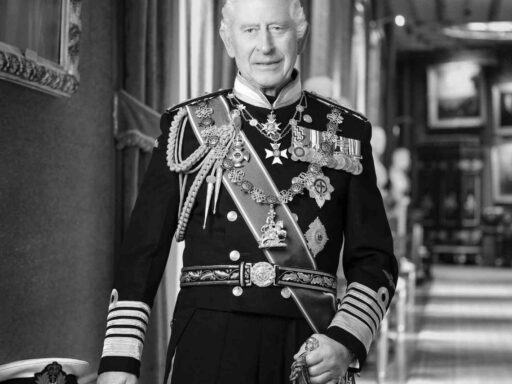The Han population has not consistently been the dominant and most populous ethnic group throughout all of China’s history. This status evolved over time as definitions of “Han” and “China” themselves changed, shaped by political, cultural, and ethnic considerations.

The concepts of “Han” and “China” are constructed and fluid categories, altering in meaning across different historical periods. The ethnic identity of the Han is particularly complex because it blends political allegiance, cultural traits, and genealogy, making its boundaries difficult to fix.
Originally, “Han” referred politically to subjects of the Han Empire (circa 206 BCE – 220 CE), marking a group defined mainly by territorial affiliation rather than ethnic coherence. Overlapping cultural terms like “Hua” gradually conflated with Han, merging political and cultural identities.

From the Song dynasty (960–1279 CE) onward, the term “Han” gained prominence as a way to distinguish culturally Chinese populations from non-Han people ruled by rival states like the Khitan-led Liao and the Jurchen Jin. The Song and Jin dynasties introduced labels such as “Hanren” (Han people) and “Nanren” (southern people), underscoring a refined ethnic-political distinction based on cultural identity and historical affiliation.
The Ming dynasty (1368–1644) formalized the Han identity further by defining it broadly as all culturally Chinese subjects, excluding groups without shared cultural practices like the Jurchens. The Qing dynasty (1644–1912) deepened this ethnic definition by enforcing stricter boundaries between Han and non-Han groups, emphasizing descent and lineage. Han identity became more rigid and ethnicized, especially influenced by 19th-century ideas regarding race and social Darwinism.

Despite the modern association of Han identity with ethnicity, the category encompasses vast internal diversity. Linguistic differences among Shanghainese, Cantonese, Fujianese, and Mandarin speakers are profound, to the point that mutual intelligibility often fails. Culinary traditions and religious practices also vary widely across Han populations.
The political function of defining Han as the dominant group emerged strongly during the Ming period and intensified later. Establishing Han dominance served to legitimize political power structures, particularly as Chinese intellectuals and reformers positioned Han as the rightful majority in opposition to ruling minorities like the Mongols and Manchus.

However, not all Chinese dynasties or empires were Han-led or Han-dominant. The Northern Wei (led by the Tuoba), Liao, Jin, Yuan (Mongol), and Qing (Manchu) dynasties were ruled by non-Han peoples. In many instances, ruling elites formed coalitions, with significant power held by non-Han groups despite governance over regions with large Han populations. This shows a distinction between political majority and numerical majority within Chinese polities.
Therefore, Han dominance in China is not a historical constant but a constructed and evolving idea. The Han population’s political and cultural primacy solidified only in certain periods, especially from the Ming dynasty onward. Before that, many periods featured pluralistic ethnic compositions and power structures involving Han and various non-Han peoples.

| Period | Han Status | Notes |
|---|---|---|
| Han Empire (206 BCE – 220 CE) | Political identity | “Han” denotes political subjects; cultural overlap with “Hua” |
| Song, Liao, Jin (10th-13th c.) | Emerging ethnic distinctions | “Hanren” vs. other groups; cultural divisions highlighted |
| Ming Dynasty (1368–1644) | Broad cultural definition | Han as dominant ethnic group; non-Han excluded |
| Qing Dynasty (1644–1912) | Ethnicized identity | Rigid boundaries; ethnic descent emphasized |
| Modern PRC (post-1949) | Ethnic classification | Han defined by descent and self-identification |
- The Han identity began as a political category but evolved culturally and ethnically over centuries.
- Han cultural diversity challenges the notion of a singular ethnic identity.
- Several Chinese dynasties were non-Han ruled; political dominance did not always align with Han ethnic majority.
- The concept of Han dominance solidified mainly from the Ming period onward.
Was the Han Population the Dominant and Most Populous Ethnic Group Throughout China’s History?
Short answer: Not exactly. The notion that the Han have always been the dominant and most populous ethnic group in China is more of a modern political and cultural construct than an absolute historical fact. While today the Han are by far the largest ethnic group in China, the story of their dominance is complex and layered with definitions, political agendas, and shifting identities.

Let’s unpack this puzzle, layer by layer.
What Does “Han” Even Mean?

The tricky part about answering whether the Han have always been dominant is that both “Han” and “China” are categories built over centuries rather than fixed realities. The label “Han” is much more recent compared to the idea of “China” itself.
Historically, “Han” didn’t start as an ethnic designation. It was more political—a term to describe subjects of the Han dynasty over 2,000 years ago. Over time, it blended with cultural notions (“Hua” meaning culturally Chinese) and slowly morphed into an ethnic identity. But the transition wasn’t straightforward.
From Political Subject to Ethnic Identity
Initially, being “Han” meant allegiance to a particular empire rather than inheriting a bloodline. The term evolved as different dynasties rose and fell:
- The Song dynasty used “Hanren” to describe culturally Chinese people living under Jin rule, showing an early ethnic dimension.
- The Ming dynasty expanded “Han” to cover all culturally Chinese subjects, but excluded certain non-Chinese groups like the Jurchens despite earlier political classifications.
- Under the Qing dynasty, the concept of Han acquired an even stronger ethnic meaning, with descent becoming central to Han identity.
By the 19th century, notions from Social Darwinism intensified ideas about rigid ethnic boundaries between Han and non-Han groups, pushing Han identity towards what we recognize today—mainly based on ancestry and self-identification.
The Han Are Not One Big Homogenous Blob
Here’s a curveball: the Han category masks vast internal diversity. A Shanghainese person and a Cantonese speaker often can’t understand each other. Culinary traditions and religious beliefs vary widely. The Han label glosses over these differences, suggesting they’re merely regional flavors of a larger “core” Han culture.
This diversity within Han groups means that “Han” functions more as a political umbrella than an ethnic monoculture. It simplifies and unites—key to understanding why “Han dominance” feels more like a product of political unity than ethnic uniformity.
Han Dominance: Aspirational or Actual?
The idea of Han dominance in China isn’t just descriptive; it’s also prescriptive. Since the Ming dynasty, “Han” has been defined in part to be the dominant ethnic group in China.
Ming and Qing rulers, constitutionalists, and republicans all framed Han Chinese as the natural majority who should wield power, often to legitimize their own rule or political aspirations. The narrative of Han majority domination is partly driven by such political needs.
The Reality of Non-Han Rule in Chinese History
It’s important to remember that not every ruling dynasty was Han. Some of China’s most famous empires were led by non-Han groups:
- Tuoba state of Northern Wei — ruled by a non-Han elite.
- Jurchen Jin Empire — a non-Han regime that controlled northern China.
- Mongol Yuan Dynasty — Mongols ruled over a very diverse population.
- Manchu Qing Dynasty — Manchus, another non-Han ethnic group, controlled China for nearly three centuries.
In these eras, political power often favored the ruling minorities or their allies, even though Han people were numerically numerous. Power sharing was complex, and political dominance rarely meant ethnic dominance in a pure sense.
Han Numbers and Influence: Then vs. Now
Population-wise, the Han have probably been the largest single ethnic group in many regions of China for centuries, but “largest” doesn’t always translate to political control. For example, during the Yuan and Qing dynasties, Mongols and Manchus ruled despite Han people being the vast majority numerically.
Moreover, the boundaries of “China” shifted, and the identity of inhabitants changed with conquest, migration, and cultural assimilation, making the question of continuous Han dominance more complicated than a straightforward count.
So, What’s the Bottom Line?
China has not always been dominated by the Han population as an ethnic group.
Instead, the Han’s current dominance is a result of historical shifts in the definition of “Han” itself, political changes, and the consolidation of cultural identity over centuries.
The Han ethnic group today stands as China’s largest group due to a complex blend of cultural, political, and demographic factors that evolved primarily after the Ming dynasty and solidified under the Qing and People’s Republic of China.
So, assuming you meet someone claiming, “The Han have ruled China forever,” you can politely smile and say: “Not exactly, but they sure make for one dominant cast in the Chinese historical drama.”
Practical Takeaways
- When discussing ethnicity or historical dominance in China, be mindful that “Han” and “China” are not static, uniform categories but constructs shaped over time.
- Recognize the huge internal diversity of Han groups; cultural differences among Han subgroups rival those between “Han” and non-Han groups in some respects.
- Understand that power and population size don’t always align. Non-Han minorities have ruled over Han majorities in China’s past, challenging simplistic ethnic dominance narratives.
- Use the concept of Han identity thoughtfully, knowing it carries political and cultural meanings that shifted dramatically at different periods.
Curious for More?
Delving into critical Han studies reveals even more nuanced perspectives on how ethnicity, politics, and identity interplay in Chinese history. Scholars like Mark Elliott demonstrate that ethnic categories like “Han” serve particular social functions and evolve with state needs—far from unchanging facts.
So next time you confront broad statements about Han dominance, remember the past weaves a rich tapestry full of surprises and exceptions.




